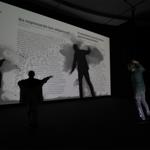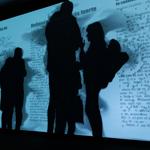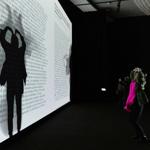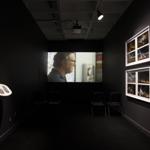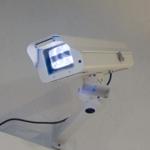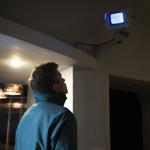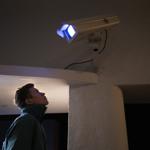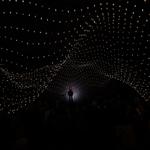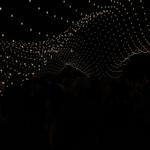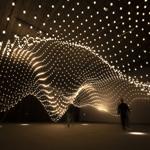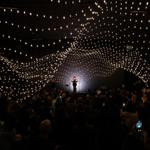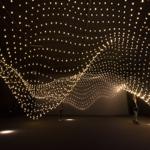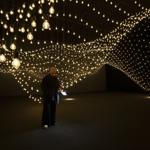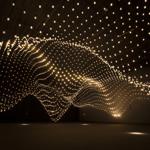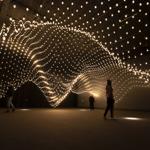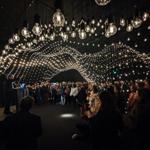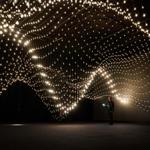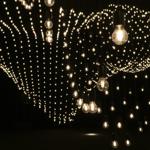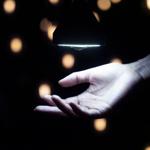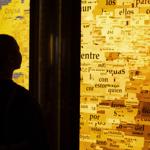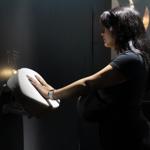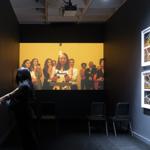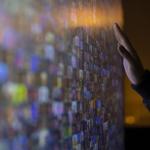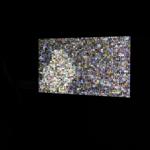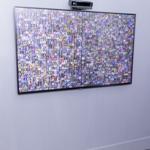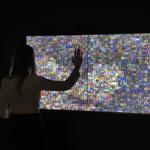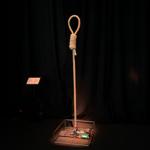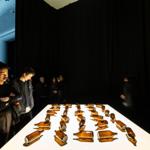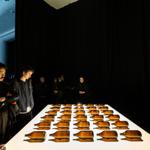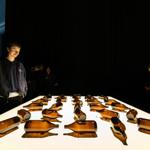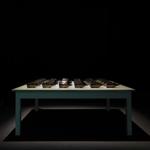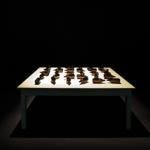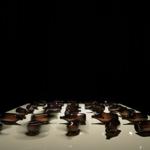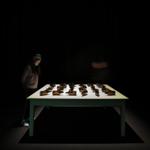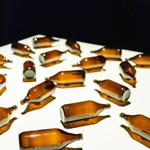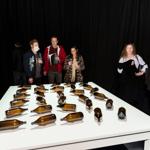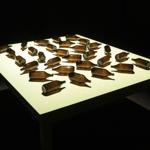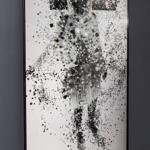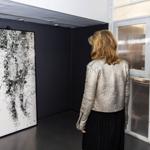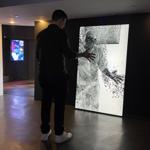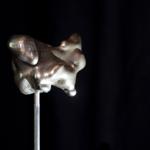TECHS-MECHS: A Survey of Mexican Technological Culture
San Francisco, California, United States
March 16th - May 31st, 2023
“TECHS-MECHS,” a new survey of eleven works by renowned media artist Rafael Lozano-Hemmer. Spanning immersive installations, kinetic sculptures, generative animations, and large-scale shadow theaters, TECHS-MECHS presents canonical works from Lozano-Hemmer's oeuvre alongside a rich chronology of technological cultural history in the artist's native Mexico.
At the heart of this landmark exhibition is the West Coast premiere of “Pulse Topology” (2021), a monumental, participatory installation that represents the culmination of Lozano-Hemmer’s most celebrated series of works activated by the human pulse, previously shown to great acclaim in Canada, Brazil, Switzerland and other countries. Composed of three thousand suspended light bulbs, each glimmering to the heartbeat of a different participant, the installation creates an immersive chorus of light and sound inspired by the classic Mexican film “Macario” (1960). This exhibition also marks the North American premiere of “Recurrent First Dream” (2022), a generative animation made from the feminist, rationalist poem “Primero Sueño” written by the seventeenth-century Mexican writer Sor Juana Inés de la Cruz.
Recognizing the militaristic origins and policing applications of the technologies he uses, Lozano-Hemmer’s installations grant participants generative agency, thereby offering them the opportunity to subvert the operational logics of control and surveillance. “Inspired by Real Events” (2004) invites visitors to look into a surveillance camera enclosure to view an intervention in Mexico City led by the artist, where volunteers dismantled security cameras in emblematic public places like the Monumento a la Independencia. “Airborne Newscasts” (2013) is a large shadow play that uses the tracked body-heat of visitors to evaporate newscables arriving live from sources such as Notimex, La Jornada, Alternet, Fox News, Reuters and Agencia EFE.
The historical precedents informing the works in TECHS-MECHS help to reorient Silicon Valley narratives about innovation towards more inclusive interpretations of technology, considering past, and sometimes ancient, traditions of experimentation. Works like “Volute Zero” (2016), a 3D printed “speech bubble”, created from a tomographic scan of the air exhaled when speaking, was inspired by the fluid-dynamic speech volutes that indigenous civilizations, like the Mayan or Aztecs, inscribed in their scrolls and reliefs. The show also includes kinetic sculptures that animate common-place objects. “Synaptic Caguamas” (2004) is an array of “Caguama”-sized beer bottles that spin on a Mexican “cantina” bar table, following patterns generated by cellular automata that simulate the neuronal connections of the brain. “Sway” (2016) is a noose that stands mysteriously inverted and that gently sways every time ICE arrests a person, like a metronome.
Throughout these works, technology is used as a means of reflexive intervention that encourages a questioning of identity both culturally and individually. In TECHS-MECHS, Lozano-Hemmer responds to these questions, not in the declarative, but in a dynamic interrogative; in doing so, he challenges prescribed notions of Latinx identity by complicating relationships between technologies, bodies, and borders. Linking diasporic networks across North America, TECHS-MECHS finds a welcome home at Gray Area in dialogue with San Francisco’s Mission District.
At the heart of this landmark exhibition is the West Coast premiere of “Pulse Topology” (2021), a monumental, participatory installation that represents the culmination of Lozano-Hemmer’s most celebrated series of works activated by the human pulse, previously shown to great acclaim in Canada, Brazil, Switzerland and other countries. Composed of three thousand suspended light bulbs, each glimmering to the heartbeat of a different participant, the installation creates an immersive chorus of light and sound inspired by the classic Mexican film “Macario” (1960). This exhibition also marks the North American premiere of “Recurrent First Dream” (2022), a generative animation made from the feminist, rationalist poem “Primero Sueño” written by the seventeenth-century Mexican writer Sor Juana Inés de la Cruz.
Recognizing the militaristic origins and policing applications of the technologies he uses, Lozano-Hemmer’s installations grant participants generative agency, thereby offering them the opportunity to subvert the operational logics of control and surveillance. “Inspired by Real Events” (2004) invites visitors to look into a surveillance camera enclosure to view an intervention in Mexico City led by the artist, where volunteers dismantled security cameras in emblematic public places like the Monumento a la Independencia. “Airborne Newscasts” (2013) is a large shadow play that uses the tracked body-heat of visitors to evaporate newscables arriving live from sources such as Notimex, La Jornada, Alternet, Fox News, Reuters and Agencia EFE.
The historical precedents informing the works in TECHS-MECHS help to reorient Silicon Valley narratives about innovation towards more inclusive interpretations of technology, considering past, and sometimes ancient, traditions of experimentation. Works like “Volute Zero” (2016), a 3D printed “speech bubble”, created from a tomographic scan of the air exhaled when speaking, was inspired by the fluid-dynamic speech volutes that indigenous civilizations, like the Mayan or Aztecs, inscribed in their scrolls and reliefs. The show also includes kinetic sculptures that animate common-place objects. “Synaptic Caguamas” (2004) is an array of “Caguama”-sized beer bottles that spin on a Mexican “cantina” bar table, following patterns generated by cellular automata that simulate the neuronal connections of the brain. “Sway” (2016) is a noose that stands mysteriously inverted and that gently sways every time ICE arrests a person, like a metronome.
Throughout these works, technology is used as a means of reflexive intervention that encourages a questioning of identity both culturally and individually. In TECHS-MECHS, Lozano-Hemmer responds to these questions, not in the declarative, but in a dynamic interrogative; in doing so, he challenges prescribed notions of Latinx identity by complicating relationships between technologies, bodies, and borders. Linking diasporic networks across North America, TECHS-MECHS finds a welcome home at Gray Area in dialogue with San Francisco’s Mission District.
General info
Show type:
Foundation
Bibliography
 Lozano-Hemmer, Rafael and Gómez-Peña, Guillermo. "Tech-Illa Sunrise." Aztlán 29, no.1, 2004. Los Angeles, California, United States. (english) (Magazines)
Lozano-Hemmer, Rafael and Gómez-Peña, Guillermo. "Tech-Illa Sunrise." Aztlán 29, no.1, 2004. Los Angeles, California, United States. (english) (Magazines) Porges, Maria. "Rafael Lozano-Hemmer." Artforum, 1 Sep. 2023. San Francisco, California, United States, 2023. (english) (Magazines)
Porges, Maria. "Rafael Lozano-Hemmer." Artforum, 1 Sep. 2023. San Francisco, California, United States, 2023. (english) (Magazines)- Secon, Holly. "Gray Area’s New Show TECHS-MECHS Celebrates Media Artist Rafael Lozano-Hemmer’s Sprawling, Immersive Body of Work." SFist, 24 Mar. 2023. San Francisco, California, United States, 2023. (english) (Newspapers)
 Trice, Emile. "Gray Area Stays With the Trouble." The Brooklyn Rail, 5 Mar. 2024. Brooklyn, New York, United States, 2024. (english) (Newspapers)
Trice, Emile. "Gray Area Stays With the Trouble." The Brooklyn Rail, 5 Mar. 2024. Brooklyn, New York, United States, 2024. (english) (Newspapers)
Photo Library (click to expand)
